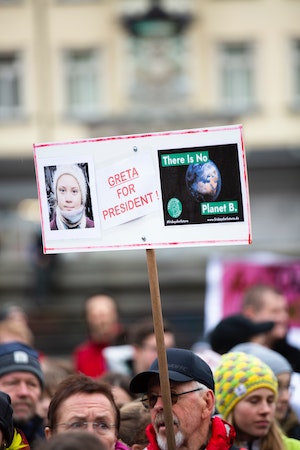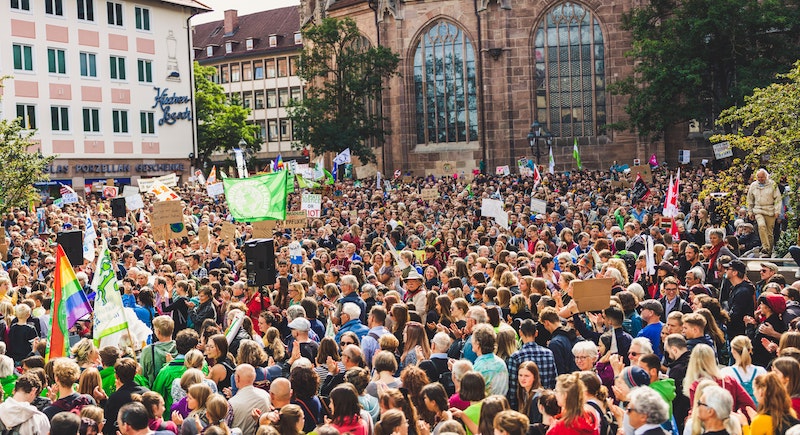By Sarah Freytag, Aimee Morales, Amy Akins

Inspiration can only get us so far. For a novelist, inspiration provides the idea, but without the writer’s hands on the keys every day there is no novel. To achieve any goal, a combination of motive and follow-through are required—environmentalism is no exception to this rule. For this unit we asked how, in regard to protecting and sustaining the environment, we could progress from inspiring sympathy to inspiring action. What are the ingredients in a successful social and scientific movement? How does a movement inspire significant collective action? Does it appeal to a collective conscience or the conscience of every individual? What role do inspirational public figures in the media play, and do they spur on effective action? What can we do to participate in collective action? Because this is a unit of many questions and debates, our unit theme itself is not only a topic but an open challenge to think critically.
Our Definitions of Radical Hope
Each of us have included our own definitions of radical hope as a means of demonstrating that true collective action begins with an appeal to each individual’s understanding of true hope. This is what makes collective action so tricky – one message must reach not only all but each.
Sarah Freytag:
Radical hope to me means striving for a better outcome despite the odds. It means persisting with change and innovation, not giving up when things seem dark. It is a continuous awareness that the fate of our world may be bleak, but that we can still resist that fate.
Aimee Morales:
I believe that people are interconnected and powerful when organized. If we cannot control the world around us, then we can at least control ourselves and our impact on our environment. Radical hope, to me, is an action plan that results in structural change. My plan has three steps. It is customizable, and its main objective is to create opportunities for mindfulness which could then cause individuals to think about their impact on the environment, in turn fostering positive environmental habits. This process begins by reclaiming minority voices. These previously marginalized voices can then assess their daily environments in order to determine which structural institutions have caused them environmental inequalities, through inaction or action, in order to try and hold those institutions accountable. The final step would be to ensure individual voices are heard by those institutions via systematic change of their policies. I live in hope that one day individuals will stand together for the improvement of everyone’s life.
Amy Akins:
I believe radical hope lies within the transformation of a heart and mind. For true change to happen, it will take everyone doing their part—whether you’re a student making sustainable decisions in your day-to-day or a CEO doing everything you can to reduce your company’s ecological footprint. Activists can’t force people to make change, but a force within people can make them change.
How does radical hope play out in our case study?
Radical hope is found in the fact that a 16-year-old girl in school has created an environmental movement which has inspired and called to action people from around the globe. Greta Thunberg has created meaningful hope to enact environmental change—what some call the “Greta Thunberg Effect.” Social media continues to be a critical tool creating this collective movement towards a more sustainable future. With this movement, Greta is doing more for the environment than most adults—a fact she explicitly pointed to in her famous ‘How Dare You’ speech to the UN. Greta is a modern-day example of how to not just inspire, but also call people to action towards a greater good.
Social Movement/Collective Action Resources:
Milan, Stefania. “When Algorithms Shape Collective Action: Social Media and the Dynamics of Cloud Protesting.” Social Media + Society 1, no. 2 (July 1, 2015): 2056305115622481.
Rupolo, Marisa. “Social Media and Society: A Generation Transformed and Transforming Consciousness and Culture.” Undergraduate Honors Thesis, SUNY, 2019.
Duit, Andreas. “Patterns of Environmental Collective Action: Some Cross-National Findings.” Political Studies 59, no. 4 (December 1, 2011): 900–920.
Greta Thunberg Case Study Resources:
“TIME Person of the Year 2019: How We Chose Greta Thunberg.” Time, 2019.
“Greta Thunberg is Leading a Global Climate Movement.” Great Big Story, 15 April 2019. Video available below:
Johnson, Stephen. “The ‘Greta Effect’: Can Thunberg’s Activism Actually Change Policy?,” Big Think, October 1, 2019.
Thunberg, Greta. “How dare you? You have stolen my dreams and my childhood.” UN Climate Action Summit, 23 Sept. 2019. Video available below:

